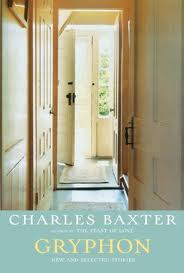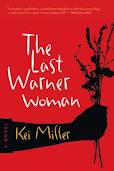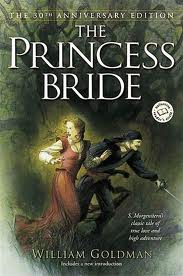Gryphon, by Charles Baxter (Vintage Books, 2011)
Ah, springtime. Finals are fast approaching for students everywhere, and in Minnesota, it seems we are all just waiting for a little relief from the stress—not to mention, the long-lasting winter weather has been a heavy burden this year. In the spirit of academia, I decided to take a look at a collection of short stories we have mentioned once before; one which was written by a professor of mine in the English Department at the University of Minnesota. And, in the spirit of springtime, I figured there was nothing better than to read a collection of stories which are all set in (and often add a little humor to) the Midwest. The collection is called Gryphon, and the author is Charles Baxter.
Charles Baxter—much like the legendary gryphon after which his collection is named—thrives in the surreal. Through his writing, he allows his audience to slip behind the curtain of reality; to stand backstage and watch life unfold from a perspective that is not quite fantastical, but not entirely real, either. Whether he is discussing the art of forgetting, as he does in his short story “Horace and Margaret’s Fifty-Second,” or the art of, well, art (see “Royal Blue”), Baxter always manages to approach his subjects from a unique standpoint; one that asks his audience to question the role of personal perception in our own realities. This theme rings true for all twenty-three short stories in his latest collection, including seven debut stories, which have not yet been published or anthologized elsewhere.
Most of the stories in Gryphon are set in the Midwest, which makes me feel right at home in his collection. From Minneapolis, to Detroit, to the fictional Five Oaks, Michigan, Baxter has established a strong, powerful sense of the Midwest throughout his writing. However, he still manages to add a somewhat surreal mood to his stories, making his writing endlessly engaging. Baxter’s stories often focus on disruptions of normality: the events that send the calm routine of Midwest life spiraling into a new realm of life.
Baxter’s title story, “Gryphon,” illustrates this idea quite accurately. “Gryphon” explores the ways in which a quirky fourth-grade substitute teacher alters her students’ perception of reality by giving them a constant jumble of facts, myths, and lies. This teacher—Miss Ferenczi—encourages her students to explore the powers of the imagination, and to think about reality as a fluid and ever-changing concept, rather than a concrete, definitive one. As Charles Baxter himself stated on his website,
[Miss Ferenczi] seems to feel that young people should be exposed to exotic facts and possibility of this sort… Ms. Ferenczi likes to expose the members of the class to these amazing facts (some of which are true, some of which are mythic, and some of which are simply untrue) as a way of expanding their sense of wonder.
—“Gryphon: Often Asked Questions”
charlesbaxter.com
In fact, even Baxter’s use of the gryphon as his title expresses his knack for the surreal. A gryphon, according to Egyptian and Mongolian myth, is a legendary creature with the body of a lion, but the head and wings of an eagle. In Baxter’s words, “…these parts are combined in order to create a new, imaginary thing that does not exist in the world until someone thinks of it.” His constant emphasis on imagination and its power in shaping reality shines through in his work—not only in “Gryphon,” where fictionalization is obvious, but in his other stories as well. “The Winner,” for example, details the experience of a young reporter who follows a reclusive millionaire to the woods of Lake Superior for an interview. The further into the trip the reporter gets, the more he loses touch with his own reality. In this story, as in many, Baxter weaves an eerie, surreal mood into seemingly normal descriptions:
In what appeared to be a sitting room close to the central hallway, he deposited himself onto a coal-black sofa. On the opposite wall another work of art had been installed, an enormous monochromatic study of what appeared to be human teeth reconsidered in a post-Cubist style…Krumholtz, turning his gaze away, looked down at the floor and noticed that he had tracked dirt in from the backyard… He felt tired and hungry. For a moment, he closed his eyes.
When he opened his eyes again, he saw Angus and Ping standing in front of him, staring at him. ‘What’s the matter with you?’
—“The Winner”
As a creative writing student at the University of Minnesota, I can now say that I have completed almost a full semester of class with Charles Baxter (pending my final paper) and have taken many classes from his former students. This concept—a writer’s ability to capture the space between fantasy and reality—has been the topic of many classroom discussions and in-depth literature analyses. What, in fact, gives a writer this ability? Charles Baxter has posed this question many times in the past sixteen weeks I’ve spent in his classroom. We’ve studied the ways in which authors set the mood for a story, and the techniques writers use to build characters and to establish settings. We’ve picked apart paragraphs for sentence structure, and sentences for word choice. However, never has Charles Baxter used his own work as an example (perhaps he’s too modest to present his own work, as we Midwesterners tend to be) and yet, he seems to be one of the best examples of the craft. From my studies, and from my journey through Gryphon, I’ve learned that walking the line between fantasy and reality is truly an art—the ability to help a reader connect to something that is just out of reach is one that very few authors have managed to master. And trust me, we’ve studied many authors over the course of the semester.
Charles Baxter’s clear and concise prose carries the reader seamlessly through each of his stories. His characters are interesting and relatable, and his plots are extremely enticing. Not to mention, he brings his sense of humor from the classroom into his stories.
I’ve learned a lot from Charles Baxter over the past few weeks. Not only has his University course taught me invaluable lessons about the art of writing, but his collection of short stories, Gryphon, has given me incredible insight into the relationships between perspective and reality, and the incredible power of the imagination. Unfortunately, I cannot recommend Baxter’s class to non-university students (though I would love to) I can—and do—recommend this collection of short stories. It’s the perfect, light read to carry you into the summer.


 Gryphon: New and Selected Stories by Charles Baxter (Pantheon Books, 2011): This book of short stories will be for those days on the dock, reading between jumps into the (OK, still somewhat cold) lake. I’ve already worked my way through a handful and found them rich (albeit, a bit lonely). A self-described “Midwestern writer in a postmodern age,” many of Baxter’s characters show twinges of teeming depths behind their reserved, Midwestern-esque facade.
Gryphon: New and Selected Stories by Charles Baxter (Pantheon Books, 2011): This book of short stories will be for those days on the dock, reading between jumps into the (OK, still somewhat cold) lake. I’ve already worked my way through a handful and found them rich (albeit, a bit lonely). A self-described “Midwestern writer in a postmodern age,” many of Baxter’s characters show twinges of teeming depths behind their reserved, Midwestern-esque facade. The Last Warner Woman by Kei Miller (Coffee House Press, 2012): If you haven’t already been able to deduce as much, I am in love with Coffee House Press. (This is a book that you will all find in another What We’re Reading post soon, FYI.) Adamine Bustamante is a woman fighting for her personal story. Born in a Jamaican leper colony, Bustamante has the gift of “warning,” but this gift is distorted as insanity when she moves to England. I’ve been giddily anticipating digging into this novel, and this will be my “meaty” book that I am most looking forward to.
The Last Warner Woman by Kei Miller (Coffee House Press, 2012): If you haven’t already been able to deduce as much, I am in love with Coffee House Press. (This is a book that you will all find in another What We’re Reading post soon, FYI.) Adamine Bustamante is a woman fighting for her personal story. Born in a Jamaican leper colony, Bustamante has the gift of “warning,” but this gift is distorted as insanity when she moves to England. I’ve been giddily anticipating digging into this novel, and this will be my “meaty” book that I am most looking forward to. The Princess Bride by William Goldman (Ballantine, 1973): This is because I firmly believe that summer is the perfect time to revisit a classic (as in, something that you’ve read so many times the spine is falling apart). And come on, who doesn’t love this book? Hazel introduced me to it when I was in elementary school. My immediate and steadfast love for the novel is obvious with my name written in a magenta gel pen in loopy elementary school handwriting branded on the first page. Buttercup and Westley’s undying love, their adventures through Guilder trying to find their way to each other, and the host of hilarious, rich characters, including the Sicilian con-man Vizzini (“In-con-theiv-able!” is still among my favorite parts in the movie adaptation), the kind giant Fezzik, the Spaniard Inigo who is out to avenge his father’s death, and many more.
The Princess Bride by William Goldman (Ballantine, 1973): This is because I firmly believe that summer is the perfect time to revisit a classic (as in, something that you’ve read so many times the spine is falling apart). And come on, who doesn’t love this book? Hazel introduced me to it when I was in elementary school. My immediate and steadfast love for the novel is obvious with my name written in a magenta gel pen in loopy elementary school handwriting branded on the first page. Buttercup and Westley’s undying love, their adventures through Guilder trying to find their way to each other, and the host of hilarious, rich characters, including the Sicilian con-man Vizzini (“In-con-theiv-able!” is still among my favorite parts in the movie adaptation), the kind giant Fezzik, the Spaniard Inigo who is out to avenge his father’s death, and many more.




